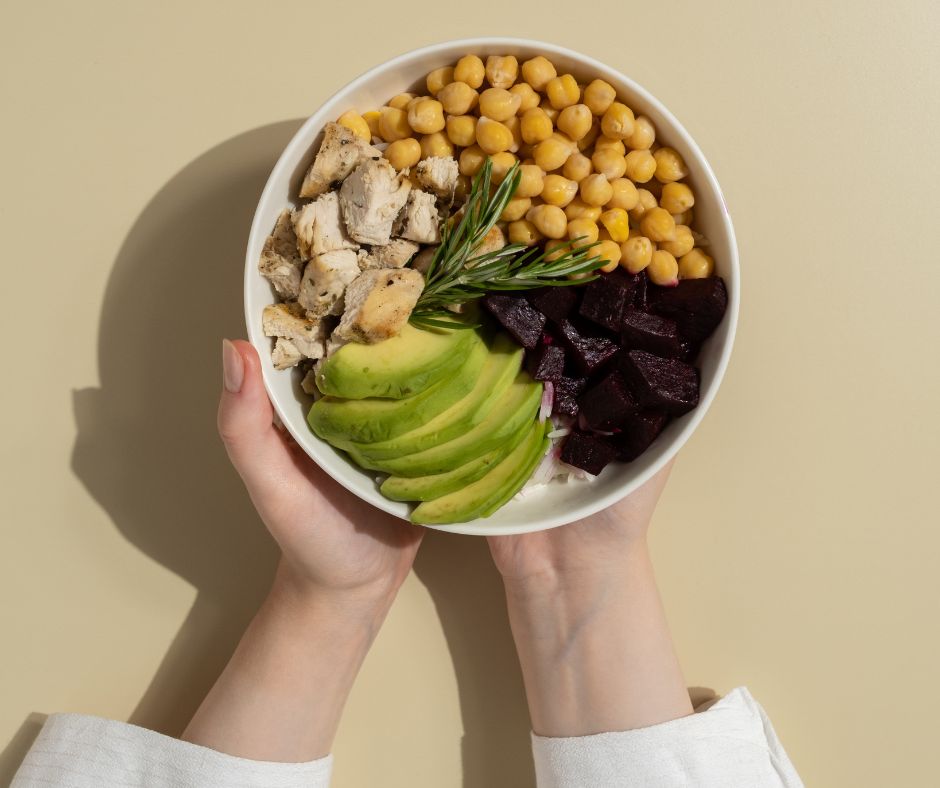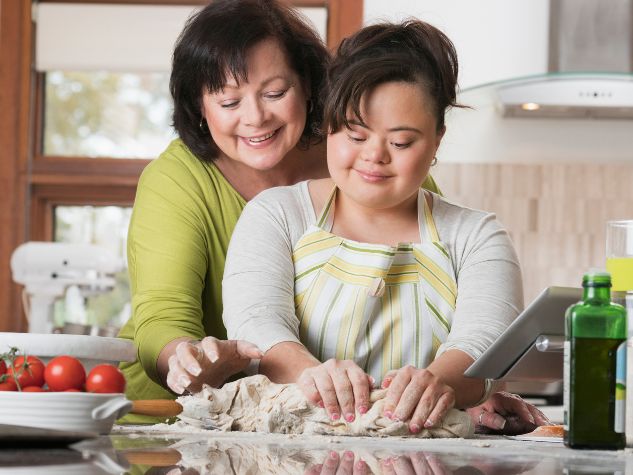Children with Down’s syndrome should have good eating environments by including each of the food groups in their daily diet.
They should eat everything: whole grains, tubers, vegetables, fruits, proteins, dairy products and oils or saturated fats.
Children with Down’s syndrome may have some difficulty in taking food, sometimes having difficulty biting or swallowing food if it is too soft.
In some cases there may be COELIAC DISEASE, diabetes, thyroid disorders (hypothyroidism) or coronary heart disease which may also affect feeding.
Sometimes there is constipation because they eat too little fruit and liquid. Children with Down’s syndrome often forget to drink water, so we have to remind them of this.
Children with COELIAC DISEASE should avoid foods containing gluten, such as wheat, oats, barley and rye. In this post you will find more information about COELIAC DISEASE in people with Down’s syndrome.
Every child, every person, is different and has different needs. It is necessary to carry out nutritional monitoring, taking into account age, activity and whether the child has any pathology.
Children with Down’s syndrome are prone to gain weight easily due to genetic factors, because there is a decrease in the metabolic rate, they have a tendency to a sedentary lifestyle, and they have a greater tendency to suffer from hypothyroidism. Obesity is an accumulation of fat and is especially harmful in children with cardiovascular diseases. Diabetes is also caused by obesity.
However, obesity is avoidable and for this it is important that they acquire good habits at home, such as not eating foods saturated in fat, chocolates, fizzy drinks, sausages, sweets… and increasing physical activity. Remember that children learn from the example of adults, and that it is advisable not to have unhealthy food at home.
In order for children to identify and learn which foods they can eat, we can give them a list of colours that will help them to be aware of healthy eating: green foods can be eaten, yellow foods in moderation and red foods are forbidden. In this way, we also encourage independence and health awareness.
Physical activity is also very important in preventing obesity. Children should get routine physical activity of about 30 minutes a day, such as going for a walk or taking the stairs. And scheduled physical activity of 30 minutes to 1 hour, depending on the age of the child, 3 to 4 times a week. As well as helping with energy expenditure, it is a healthy habit and also helps emotionally to reduce anxiety and avoid snacking between meals.
Younger children who are new to feeding have problems with choking and for them it is important to take into account the way the food is prepared. Very consistent, thick porridges make it difficult for the child to move the tongue inside the mouth and this is when choking occurs. The baby food should be thick, but not too thick, so that the child can move his tongue inside his mouth and swallow. It is also not advisable to mix textures, such as yoghurt with pear squares. The baby is faced with a liquid and a solid texture and it makes feeding difficult.
It is best not to offer solid foods until teething is complete, which in children with Down’s syndrome can happen at the age of 2 or more. From this age onwards we can mix more textures and introduce more solids. Before teething, it is preferable to offer a more pureed food, put it in a small spoon and place it in the centre of the tongue, inside the child’s mouth so that they can swallow. It is not advisable to offer food with the tongue outside the child’s mouth. Children with Down’s syndrome must be taught to chew.
Even at this age we should encourage healthy habits, such as whole grains, fruit and vegetables, drinking water, keeping sugar intake low, giving them small portions, avoiding foods high in saturated fat, physical activity, not snacking between meals… fruit is best eaten as whole fruit because of its high fibre content, and avoiding juices. The smart plate is half vegetables, a quarter of the plate should be protein and the other quarter a carbohydrate (e.g. a potato or a portion of rice).
Here is a table of recommended portions:
| Food | Size | Number of daily portions | |
| 2-3 years old | 4-5 years old | ||
| Vegetable | ½ cup | 1 ½ | 2 |
| Cereal | 1 corn tortilla, 1 slice of bread, ½ cup of rice, ½ cup of pasta | 3 | 6 |
| Legumes | ½ cup of legumes | 2 to 3 | 3 |
| Animal | 30 gr chicken, cheese, beef, pork, 45gr fish, 1 egg | 2 to 3 | 3 |
| Dairy | 1 cup of milk | 2 | 2 |
| Fat | 1 sp. Vegetal oil, ½ avocado, 10 almonds | 3 | 4 |
As a conclusion, obesity in children with Down’s syndrome is preventable. The commitment of parents is essential to prevent it and to encourage good nutrition in the family. The diet of children with Down’s syndrome is the same as that of a child who does not have Down’s syndrome, although some considerations must be taken into account in certain cases.
















